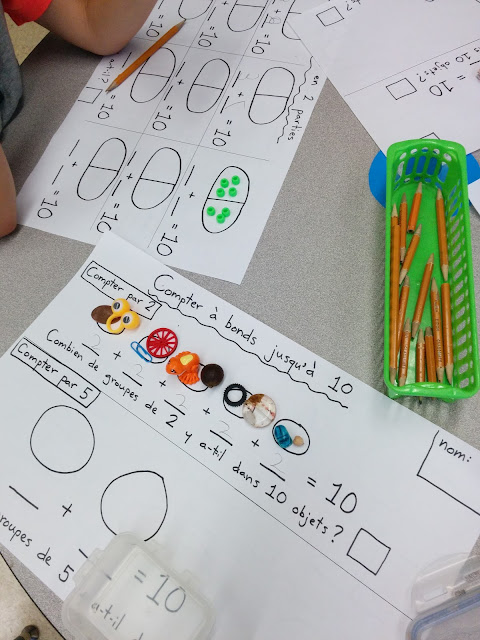We sang our vowel song some more, and learned the hand gestures for the vowel sounds including é and è. Then we tried putting different consonants together with those vowel sounds, making the hand gesture for each as we read it. The hand gestures are helpful to give as hints when kids are writing, to draw attention to the vowel sounds in a word that they are trying to translate into letters.
One day the kids started telling stories of seeing cats or squirrels in parks or yards, and we retold the stories in French and they wrote them down. We used our feelings and needs vocabulary in various ways, and used our Everybody Wins game to work out a conflict between two students in the circle. We read books about feelings, and told stories of times when we have gotten angry.
The kids practiced silent "reading to self" every day for 10 minutes, and I continued to read 1-on-1 with them at that time. I've read with almost every student now, so that next week I'll be able to give them books at their level and put them into levelled reading groups.
We celebrated the 10th day of school! Part of our morning routine is to add a "petal" to the flower each day, and when a flower has 5 petals it goes on the board. When two flowers are completed it means we're at a decade number, and those are the days that we bring our collections to school to count up. The flowers fill a 10 frame on the board which will be filled on the 100th day of school.
The kids used a counting mat to count their collection objects by 2 and by 5. Then they found as many ways as they could to add 2 numbers to make 10.
The rest of the week we focused on saying, reading and writing simple addition and subtraction equations, which we call "les phrases de math." Many students are still constructing their understanding of what addition and subtraction mean. So we acted out addition and subtraction situations and I asked students to use counters to make addition and subtraction sentences independently. Many still need support with this, especially with subtraction.
With some common language in place, we tackled our first story problem (often called word problems). I showed the kids the steps I would like to see: using math materials to help, we draw the problem, then make an equation to answer it and circle the answer. After all working on a problem, we looked at some of the kids' solutions together and gave feedback on the parts done well and what could be improved the next time.
We ended the week with another art project, this time decorating a frame with coloured tissue. The kids used watered down glue to set the tissue in place. The frames are to go with their weavings, so again we talked about the colours of feelings.


















No comments:
Post a Comment